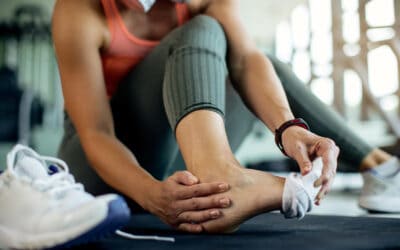Neck pain has become increasingly common in today’s digital world. Whether it stems from poor posture, prolonged screen time, stress, or underlying conditions, persistent tension in the neck area can severely affect daily functioning and overall quality of life. While medications and rest can help, one of the most effective and natural ways to relieve neck pain is through stretching. In this comprehensive guide, we explore the best stretches for neck pain, when to use them, and how to incorporate them into your daily routine.
Understanding the causes of neck pain
The cervical spine is a delicate and complex structure that supports the head and facilitates a wide range of motion. Because of its mobility and constant use, it is particularly vulnerable to strain and dysfunction. Common causes of neck pain include poor posture (especially forward head posture), prolonged use of electronic devices, sleeping in awkward positions, muscle imbalances, stress-induced muscle tension, and injuries such as whiplash. Chronic conditions like cervical spondylosis or herniated discs may also contribute to ongoing discomfort.
How stretching helps with pain?
Stretching can be a powerful tool in the management of neck pain. When done properly, it improves flexibility, promotes circulation, relieves muscle tension, and restores proper alignment. Unlike passive treatments, stretching empowers individuals to actively participate in their recovery and prevention strategies. It also helps correct posture, which is a foundational component in reducing recurring neck strain.
General guidelines before stretching
Before attempting any of the following stretches, consider these guidelines to ensure safety and effectiveness:
-
Always warm up with light movement, such as walking or shoulder rolls.
-
Perform stretches slowly and avoid bouncing.
-
Hold each stretch for 20 to 30 seconds.
-
Repeat each movement two to three times, allowing the muscles to relax more deeply with each repetition.
-
If you experience sharp pain, dizziness, or numbness, stop the stretch and consult a healthcare provider.
Best neck stretches for pain relief
Chin tuck stretch: is ideal for improving posture and strengthening the deep neck flexor muscles. Begin by sitting or standing upright. Gently retract your chin back, keeping your eyes level. You should feel a stretch along the base of the skull and the back of the neck. This movement helps reverse the effects of forward head posture.
Upper trapezius stretch: To stretch the side of the neck and top of the shoulder, sit comfortably and gently tilt your head toward one shoulder. Using your hand on the same side, apply light pressure to deepen the stretch. Keep the opposite shoulder relaxed. This stretch targets muscles that often become tight during stress or prolonged sitting.
Levator scapulae stretch: This stretch targets a muscle that runs from the upper shoulder blade to the cervical spine. Turn your head about 45 degrees to one side, then gently look down as if you are trying to smell your armpit. Use the hand on the same side as the direction you are looking to gently guide the head forward and downward. A gentle pull will stretch the levator scapulae.
Neck rotation: For improving side-to-side mobility, sit or stand with a neutral spine. Slowly rotate your head to the right until you feel resistance. Hold, then return to center. Repeat on the left side. This stretch enhances flexibility and reduces stiffness from immobility.
Scalene stretch: These small muscles on the side of the neck assist with breathing and movement. To stretch them, sit tall and gently tilt your head to the side and slightly back. Avoid shrugging your shoulders. You may feel the stretch extending from the collarbone up toward the ear.
Doorway chest stretch: Although not a neck stretch directly, this movement helps open up the chest and shoulders, which indirectly relieves neck tension by improving posture. Stand in a doorway with your forearms placed on the door frame at shoulder height. Step one foot forward and gently lean your body through the doorway. This stretch encourages better alignment of the upper body.
Shoulder rolls: Shoulder movement plays a key role in relieving upper back and neck strain. Roll your shoulders slowly in a forward motion, then reverse. This promotes blood flow and reduces tension around the neck and upper traps.
Incorporating stretching into your routine
Consistency is crucial. Incorporate these stretches into your daily routine, especially if your job or lifestyle includes long hours at a desk or in front of a screen. Aim to stretch at least once a day, and take short breaks every 30 to 45 minutes to perform simple movements like shoulder rolls or neck rotations. Practicing these stretches in the morning can help loosen muscles after sleep, while doing them in the evening can release accumulated tension from the day.
When to seek professional help?
While stretching is effective for mild to moderate neck pain, it is important to recognize when professional care is needed. If your neck pain is severe, persistent, or accompanied by symptoms such as numbness, tingling, or weakness in the arms, seek a thorough evaluation. Conditions such as herniated discs, nerve impingement, or spinal instability require medical attention and guided rehabilitation.
A comprehensive approach to recovery may include physical therapy, chiropractic care, massage therapy, and ergonomic coaching. Addressing the root cause of neck pain rather than only managing symptoms is key to long-term relief.
How Broadway Chiropractic and Wellness can help
At Broadway Chiropractic and Wellness in Midtown Manhattan, we understand the burden neck pain can place on your daily life. Our team of experienced chiropractors, physical therapists, and wellness professionals offers an integrative, patient-centered approach to care. We tailor treatment plans that combine hands-on therapy, posture correction, and targeted stretches to support healing and prevent future episodes.
If you’re ready to take control of your neck pain and find lasting relief, contact us today to schedule a consultation. Let us help you move better, feel better, and get back to doing the things you love.
Visit bcwnyc.com to learn more or to book your appointment today.




